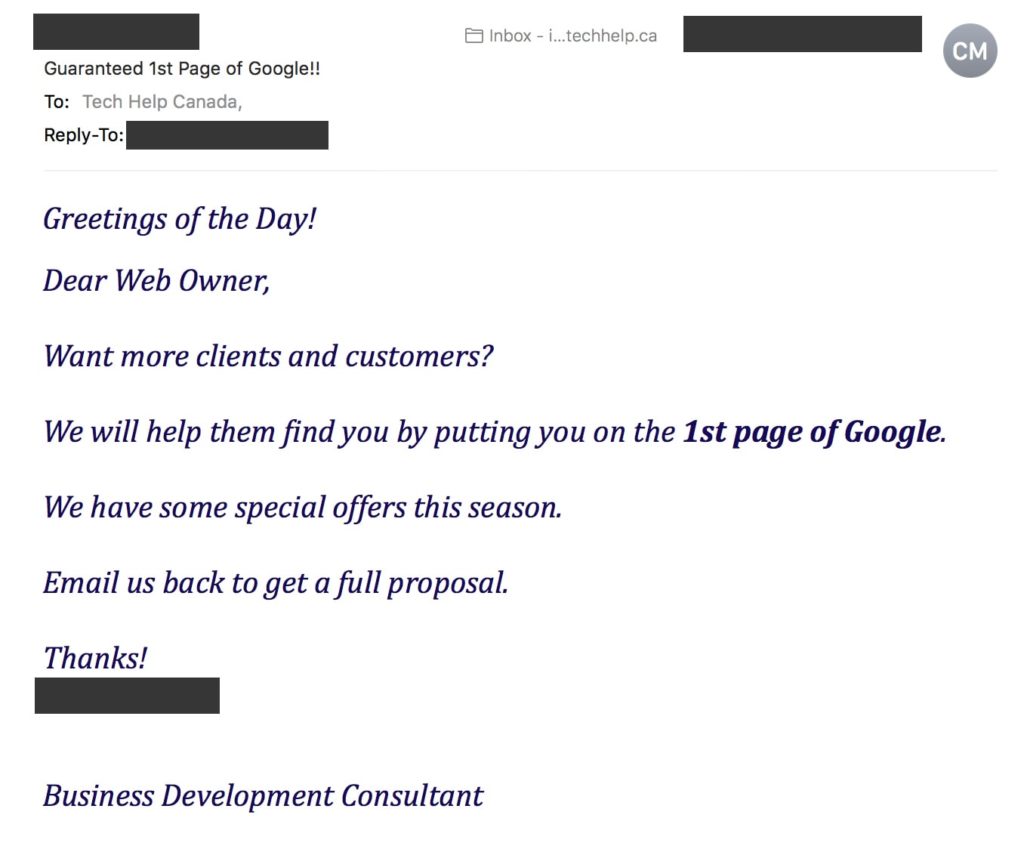Every day, search engines like Google refine their algorithms to improve the way they deliver results to users. These changes might seem unpredictable, and when they happen, your site’s ranking can take a hit, sometimes out of nowhere. It’s easy to get swept up in the chaos, constantly scrambling to adjust.
The key to success isn’t chasing every algorithm update. Instead, it’s about building a flexible, long-term SEO strategy that can withstand change.
What is an SEO Algorithm?
In simple terms, an SEO algorithm is a set of rules that search engines follow to determine how web pages are ranked in search results. These algorithms consider various factors, including the page’s content, its relevance to the search query, the quality of backlinks pointing to the page, and the overall user experience of the site.
SEO algorithms are constantly evolving because search engines’ purpose is to provide the most relevant and valuable results to users. Every time there’s an algorithm update, search engines adjust these ranking factors in an attempt to match user intent better, improve search quality, and reward well-optimized websites.
The key to adapting successfully to these changes lies in maintaining an agile SEO strategy that aligns with search engine goals rather than reacting to each update with panic.
In 2018, Google introduced its E-A-T (Expertise, Authoritativeness, Trustworthiness) guidelines, which had a significant impact on numerous industries, particularly those in health and finance. Websites like WebMD and Healthline saw their rankings improve because they focused on providing accurate, expert-driven content.
Meanwhile, sites lacking credibility were pushed down the search results. This change reflected Google’s growing emphasis on delivering trustworthy, high-quality content to users.
Tips for Keeping Up With Regular SEO and Algorithm Changes
Instead of constantly chasing new algorithm updates, adopt long-term strategies that enable you to stay adaptable and resilient in the face of changes.
Below, we outline strategic habits and approaches to help you adjust effectively to algorithm changes, keeping your website optimized for success.
1. Build a Strong Brand
One of the most effective ways to future-proof your SEO is by building a brand that stands out and earns trust over time. Search algorithms have shifted away from keyword-heavy pages and toward entities—brands, experts, and publishers with established credibility.
A trusted brand with consistent visibility and high engagement is more likely to remain stable through updates because it signals value, not just technical optimization. In short, if people seek out your brand, Google takes notice.
Part of building that trust involves showing up authentically—especially through leadership. In fact, 82% of consumers are more likely to trust a company whose leadership is active on social media, which strengthens your brand’s credibility. That kind of visibility reinforces authority both with your audience and with search engines, giving you an extra layer of protection when algorithms shift.
A strong brand comes from delivering high-quality content, providing excellent service, and showing up where your audience already spends time. This includes maintaining consistency across your messaging, visual identity, and user experience.
If your brand becomes known for delivering relevant, trustworthy insights, you’ll be less impacted by algorithm changes that penalize low-value content or weak authority.
2. Set Up Internal SEO Hackathons
Search engines now use artificial intelligence to evaluate not just what your content says but how well it aligns with user intent and semantic context. It’s no longer enough to repeat keywords, your content needs structure, clarity, and purpose.
Write for humans first, but also ensure search engines can understand the relationships between your ideas. Use heading tags properly, embed semantic keywords, and keep paragraphs tight and informative.
AI also impacts how content is discovered, making tools like topic clustering, entity optimization, and structured data more important than ever. Creating value-driven content while considering how algorithms interpret relevance gives your pages an edge in competitive SERPs.
It also makes your content more suitable for rich results, featured snippets, and other AI-enhanced search features.
3. Create Content With AI In Mind
AI continues to reshape how search engines interpret and rank content. Instead of relying solely on keywords, modern algorithms now evaluate context, structure, and user intent. This shift means your content must serve both humans and machine readers without compromising quality or clarity.
To keep up, structure your pages with clear headings, concise paragraphs, and semantic keyword usage that AI can process more accurately. Incorporating tools that identify intent-based phrases and optimize readability can strengthen your SEO performance. These strategies not only boost rankings but also enhance content relevance and usability.
What’s more, AI can empower your content process rather than complicate it. In fact, according to HubSpot’s State of AI Report, 66% of marketers say AI and automation tools help them spend more time on the creative aspects of their jobs—proof that AI can simplify your workflow while elevating quality.
By using AI to streamline research, identify trends, or automate optimization tasks, you free up more time to focus on crafting high-quality, human-first content.
4. Demonstrate E-E-A-T
E-E-A-T stands for Experience, Expertise, Authoritativeness, and Trustworthiness—essential traits Google prioritizes when evaluating website content. These elements help establish the reliability of your content, which is especially critical in YMYL (Your Money, Your Life) niches like finance, health, and law.
If your content visibly demonstrates these qualities, it stands a better chance of performing well through algorithm shifts.
- Experience: Demonstrate firsthand knowledge through case studies, personal insights, or product usage. Readers and search engines value practical, real-world familiarity over generic commentary.
- Expertise: Authors should be proven professionals in their field. Include bios, credentials, and professional background to build subject credibility.
- Authoritativeness: Secure backlinks from authoritative websites, mention collaborations, and highlight achievements to position your content as a trusted source.
- Trustworthiness: Use transparent policies, accurate data sources, and visible security indicators (like HTTPS or trust badges) to show users your site can be trusted.
Demonstrating E-E-A-T goes beyond adding a byline—it requires consistency across your site’s content, technical setup, and reputation. When users and search engines both recognize your credibility, your pages are more likely to withstand algorithm volatility.
Need help creating SEO-friendly content that adapts to algorithm shifts? Let HelperX Bot guide you through keyword mapping, topic clustering, and structured content creation. It’s your AI assistant for staying one step ahead of the search curve.
5. Hold ‘Intentional Work Days’
Consistent effort is key to staying SEO-relevant. Rather than reacting to every new algorithm update, schedule intentional workdays to review your site’s performance and make iterative improvements.
According to HubSpot’s State of Inbound Marketing Report, 61 % of marketers list improving SEO and growing organic presence as their top inbound priority. This widespread focus reinforces the value of scheduled SEO check-ins—intentional workdays that keep you competitive by consistently refining and aligning your content.
These dedicated sessions help your team stay proactive instead of scrambling in response to traffic drops or ranking shifts. Treat them as routine touchpoints for refining SEO, not emergency fixes.
During each workday, evaluate critical pages and update content where needed. Optimize underperformers, fix broken links, check redirects and indexing issues, and study recent Google updates to see how they may affect your site.
Regular workdays create a feedback loop that builds momentum and encourages long-term SEO health. Over time, this habit also boosts internal accountability and keeps everyone focused on continuous improvement.
SEO algorithms evolve to reward what users want, not just what bots read. That makes aligning content with audience expectations, pain points, and intent the best long-term strategy.
When you prioritize solving real user problems, you naturally create high-quality content that algorithms highlight. Think of SEO as enhancing user experience rather than gaming the system.
Use keyword research to uncover the language and questions your audience uses. Develop pages that address those needs with clear takeaways, helpful visuals, and streamlined navigation.
The more your content feels useful and relevant to human readers, the more algorithm-proof it becomes. Customer-first content builds loyalty and earns natural engagement signals like longer dwell time and lower bounce rates—both key ranking factors.
7. Take A ‘Test And Learn’ Approach
In an ever-changing SEO landscape, staying flexible is more valuable than aiming for perfection. A test-and-learn approach allows you to gather data before scaling changes site-wide.
Instead of relying on guesswork, run small experiments, like tweaking headlines, testing new meta descriptions, or adjusting internal links, and track their impact over time. This method reduces risk while encouraging smart, data-informed improvements.
For example, you might A/B test long-form vs. short-form content to see which format drives more traffic or conversions. You could trial different CTAs or layouts across pages to discover what improves engagement or click-through rates.
These insights give you a clearer understanding of your audience and help guide future content strategy. SEO success isn’t built on one-time wins, it’s shaped by continuous testing and adaptation.
8. Provide a Positive User Experience
User experience (UX) is now a critical component of search engine rankings. Factors like page speed, mobile-friendliness, intuitive navigation, and visual stability all influence how long users stay on your site and how positively they engage with your content.
And it’s not just theoretical—improving Core Web Vitals can lead to increased revenue per visitor by 53.37%, conversion rate by 33.13% and contribute to measurable improvements in keyword rankings, according to DebugBear’s Core Web Vitals Benchmark Study. That’s a clear signal that optimizing UX isn’t optional, it’s a direct path to higher search visibility and better performance.
If your site frustrates visitors with slow loading or poor design, they’re more likely to leave quickly, and that bounce sends negative signals to search engines. Prioritize technical elements such as Largest Contentful Paint (LCP), First Input Delay (FID), and Cumulative Layout Shift (CLS), all of which form part of Google’s Core Web Vitals.
Beyond technical fixes, evaluate how easily users can find what they’re looking for and whether your CTAs are clear and well-placed. Great UX isn’t just about aesthetics, it’s about removing friction, guiding action, and making the browsing experience feel effortless.
For scalable web hosting solutions that ensure optimal performance, HostGator provides reliable and customizable options that grow with your website. Their hosting plans are designed to support websites as they scale, ensuring a smooth user experience.
Tools & Resources That Help You Stay Ahead
While strategy is crucial, execution is where the magic happens. Below are some powerful tools and resources that help you monitor algorithm changes, adjust your plan, and stay current with SEO trends.
Stay Alert With SEO News and Update Trackers
Keeping tabs on algorithm shifts begins with following reliable SEO news sources. Google’s Search Central Blog, Moz, and Search Engine Journal offer timely updates and expert interpretations that help you understand the “why” behind changes.
Subscribing to these platforms or enabling notifications ensures that you never miss impactful news. Staying informed helps you respond proactively instead of scrambling to recover after your traffic drops.
Use Technical SEO Tools to Monitor Site Impact
Ahrefs, SEMrush, and Moz are essential for maintaining your site’s technical integrity and visibility. These tools help you track broken links, monitor keyword fluctuations, assess backlink health, and run technical audits—all crucial after an algorithm update.
Their dashboards surface red flags quickly, letting you take corrective action before rankings suffer. Relying on these tools regularly also helps you build a performance baseline for smarter long-term optimization.
Track Core Web Vitals and UX Signals
With Google’s Core Web Vitals now a confirmed ranking factor, monitoring your site’s user experience is no longer optional. Tools like Google PageSpeed Insights and Lighthouse offer detailed reports on loading speed, interactivity, and layout stability.
These insights help identify user experience issues that could quietly erode your rankings. Prioritizing UX metrics allows you to meet algorithm expectations while delivering a smoother experience for your visitors.
Join Communities That Spot Trends Early
Online SEO communities on Reddit, LinkedIn, X (formerly Twitter), and niche Slack groups often catch wind of algorithm shifts before official announcements. Members regularly share case studies, anomalies, and test results that provide a ground-level view of what’s happening.
Joining these circles gives you early access to actionable advice and sharpens your ability to distinguish real trends from SEO noise. Staying plugged into these spaces fosters collaboration and keeps your strategy nimble.
Build an Internal Dashboard
An internal SEO dashboard powered by Google Data Studio or Looker Studio consolidates your most important metrics in one place. You can visualize ranking changes, traffic shifts, technical flags, and goal completions in real-time—making it easier to detect patterns during or after an algorithm update.
This transparency supports faster decision-making and lets your team move from reactionary fixes to proactive improvements. A custom dashboard also helps executives see SEO as a measurable, evolving asset
Final Thoughts: Looking Beyond the Algorithm
Adapting to algorithm changes is an ongoing process, not a one-time fix. Instead of reacting with panic to every update, businesses that invest in long-term SEO strategies rooted in expertise, trust, and user value are better positioned for consistent visibility.
By focusing on what search engines are truly optimizing for—helpful, relevant, and high-quality content, you build a foundation that withstands change.
To stay ahead, continue refining your content, monitoring technical performance, and prioritizing the real needs of your audience. Leverage data, test new approaches, and align your strategy with evolving user behavior and search intent.
When your SEO efforts are rooted in adaptability and purpose, algorithm updates become opportunities, not obstacles.
Want to build content that thrives no matter the algorithm update? Use HelperX Bot to plan and produce resilient SEO strategies, write optimized blog posts, and respond smartly to ranking shifts. It’s like having an SEO strategist and content writer in one.
Frequently Asked Questions
How long does it take to recover from a drop in search rankings?
Recovery time depends on the cause of the drop and how quickly issues are addressed. It can take anywhere from a few weeks to several months for Google to re-evaluate and re-rank your pages after improvements are made.
Can outdated content negatively affect my SEO performance?
Yes, outdated or irrelevant content can hurt your site’s rankings over time. Regularly refreshing old pages with current data and aligning them with user intent helps maintain visibility and prevents performance drops after algorithm updates.
What role do visual elements play in search engine optimization?
Visuals like images, videos, and infographics enhance user engagement and support better on-page experience. When optimized properly with alt text and fast-loading formats, they can reduce bounce rates and contribute positively to ranking signals like dwell time.
Sources:
- https://www.edie.net/partner-content/5-steps-to-transforming-your-ceo-into-a-brand-asset/
- https://moz.com/learn/seo/google-eat
- https://blog.hubspot.com/marketing/state-of-ai-report
- https://www.hubspot.com/marketing-statistics
- https://nitropack.io/blog/post/web-vitals-tech-report-nitropack

We empower people to succeed through information and essential services. Do you need help with something? Contact Us.
Want a heads-up once a week whenever a new article drops?







